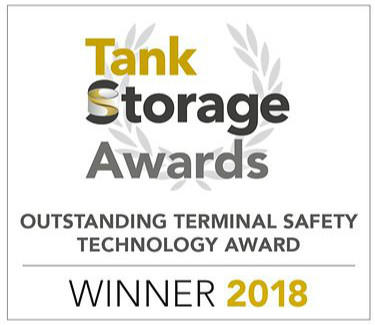[
China Instrument Network Instrument Development ] The Emerson Rosemount 5900S 2-in-1 radar
Level Gauge won the Outstanding Terminal Safety Technology Award at the 2018 Global Tank Storage Awards. Presented by Tank Storage Magazine, the award recognizes excellence in safety and innovation in the industrial sector.
As a non-renewable energy source, oil spills often occur. Among them, overflow tanks are a major safety risk in the tank farm. Not only is the resource wasted, it is more likely to cause an unsafe accident, so the instrument for measuring the tank is essential. As a general-purpose instrument, radar level gauge has a wide range of applications in this respect.
The radar level gauge is mainly a measuring instrument based on the principle of time and stroke. The radar wave runs at the speed of light, and the running time can be converted into a level signal by electronic components. The probe emits a high-frequency pulse that propagates in the space at the speed of light. When the pulse encounters the surface of the material, it is reflected back and received by the receiver in the meter, and the distance signal is converted into a level signal.
Emerson Electric Company was founded in St. Louis, Missouri, USA in 1890. After more than 100 years of effort, Emerson Electric has grown from a regional manufacturer to a strong group of global technology solutions. As a diversified global manufacturer, Emerson combines technology and engineering to deliver innovative solutions through process management, industrial automation, network energy, environmental optimization technologies, and commercial and residential solutions.
The award-winning Rosemount 5900S is typically used in larger warehousing applications. The 2-in-1 technology uses two separate electronic units built into the transmitter head, using an antenna to simultaneously achieve a tank level gauge and independent overflow prevention. Tank sensing, which combines a tank level gauge with a separate overflow tank function.
According to reports, the Rosemount 5900S radar level gauge is often combined with a high-precision multi-point temperature sensor to provide ±0.5mm (0.020 inch) instrument accuracy, minimizing level measurement uncertainty. It enhances your storage operations by providing certified custodial transfer accuracy, better inventory management, and reliable loss control data.
The Rosemount 5900S takes overload safety to a higher level, with an innovative 2-inch 1 feature that includes two radar gauges at a single level and excess measurement. It is SIL 2 and SIL 3 certified according to IEC 61508 and supports API 2350 compatible solutions.
In addition, the Rosemount 5900S 2-in-1 meets the independent protective layer requirements of the IEC 61511 and API 2350 standards, requiring only one tank opening to save installation costs. The level gauge can perform remote verification tests in minutes without affecting tank operation. Greatly reduce the overall risk of labor, downtime and workers.
(Source: Emerson, Baidu Encyclopedia, China Education Equipment Purchasing Network)
Heat Insulation
Ceramic fiber glass rope and glass fiber rope are both types of insulation ropes used in various applications.
Ceramic fiber glass rope is made from a combination of ceramic fibers and glass fibers. It is commonly used in high-temperature applications, such as sealing and insulating furnace doors, expansion joints, and gaskets. It can withstand temperatures up to 2300°F (1260°C) and provides excellent thermal insulation and resistance to heat and flame
Glass fiber rope, on the other hand, is made entirely from glass fibers. It is used in a wide range of applications, including thermal insulation, electrical insulation, and sealing. Glass fiber rope is known for its high tensile strength, good resistance to chemicals and moisture, and excellent electrical insulation properties.
Both types of ropes are flexible and can be easily wrapped or molded around objects, making them suitable for various sealing and insulation purposes. They provide thermal insulation, prevent heat loss, and can also act as a barrier against fire, chemicals, and moisture.
